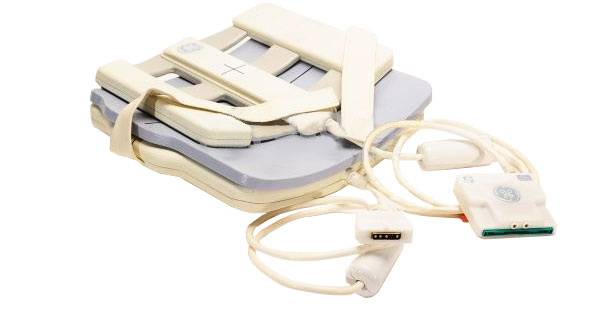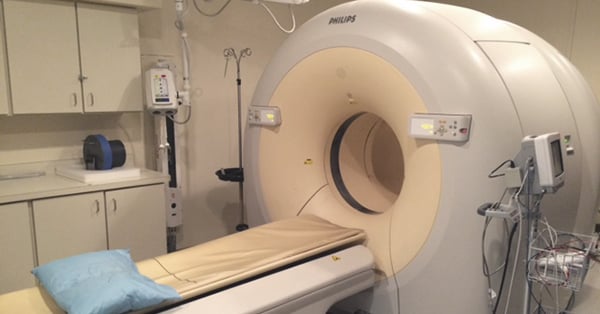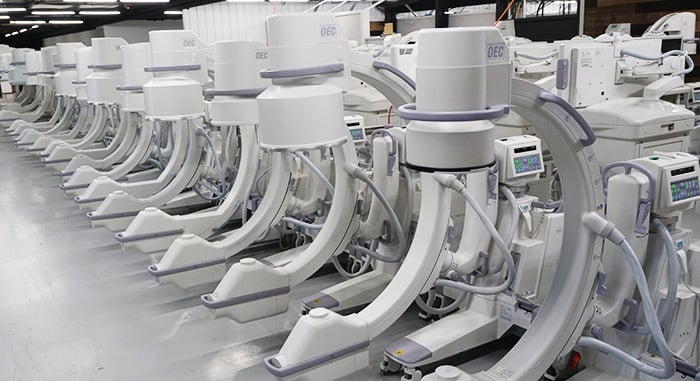
Just as the technology of our modern times makes so many day-to-day tasks easier and more efficient, so do the advantages of phased array MRI coils. Remember when you had to get up to turn off the light? BAM: The Clapper! How much time did you spend rewinding VHS movies? BOOM: DVDs! Longing for a better MRI user experience? BANG: phased array coils!
To help you better understand what this technology does and how it helps, we're going to answer three common questions our team receives about phased array MRI coils and the advantages they bring to MRI scanning.
What is a phased array MRI coil?
Phased array, or sometimes simply array, is a type of MRI coil that allows parallel imaging. These are multi-channel coils with each channel having its own receiver. A 4, 8, 16, 32, etc- channel system increases the number of receiver channels over traditional MRI coils. Array coils are made for many different studies from head/neck, and shoulder, to torso, wrist, and beyond. These coils are available for both open and closed MRI systems. Most major manufacturers produce array coils and parts providers like Block Imaging stock many of these coils for same day shipment.
Browse and order MRI coils online
Why use a phased array MRI coil?
1. They speed up scan time
This may be the most obvious benefit of phased array. Sometimes more sophisticated MRI scans can take a very long time. With multiple channels, however, they can be performed many times faster (4, 8, or 16 times faster for instance). A scan that would ordinarily have taken an hour can potentially be done in 15 minutes or less.
Quicker scan times allow for greater patient comfort. During some studies, patients have to hold their breath or stay perfectly still; things that are accomplished more easily over short periods of time. All of this improves the patient experience.
2. They give you more signal
The ratio of signal to noise is used in evaluating coil performance and image quality. MRI manufacturers are constantly striving for more signal and less noise. Multi-channel technology increases signal and thereby, scan quality. One can also increase signal by using a 3T MRI system, but simply purchasing some multi-channel coils to use with your 1.5T scanner is a lot more economical!
See a comparison of 3T and 1.5T MRI scanners
3. They cover a wider area in a single scan
Since all the receiver channels are imaging at once, larger portions of the anatomy are being covered in each pass (again in less time). This is especially helpful when doing spine work and vascular studies on legs.
What are the industry implications of phased array coils?
As in any emerging technology, improvements in multi-channel, phased array coils have certainly raised their fair amount of questions, but this is a technological advancement that all MRI owners would do well to keep up with. By upgrading one’s MRI coils, it’s possible to get more out of a magnet without buying an entirely new MRI system.
It’s even been suggested that utilizing multi-channel coils will allow MRI to replace CT in some instances. Previously, CT scanners might have been the modality of choice because of short scan times, but with multi-channel systems shortening MRI scan times, the choice of an MRI scan over the high-radiation doses of CT scans becomes more obvious.
Hopefully, these few quick answers have helped phased array newcomers reach a better understanding of the latest in MRI coils. Keeping up with new technology isn’t always easy ($700 iPhones) or worth it (Segways), but in this case, we think the magnet owner looking to do more with their existing MRI machine has something that definitely bears consideration.

Jordan Clark
Jordan Clark is a Returns Coordinator on the Block Imaging Parts Team. He loves supporting customers during part returns and core exchanges. Outside work, Jordan enjoys being outdoors with his family, supporting University of Michigan football, and snacking on the occasional Kit Kat.






